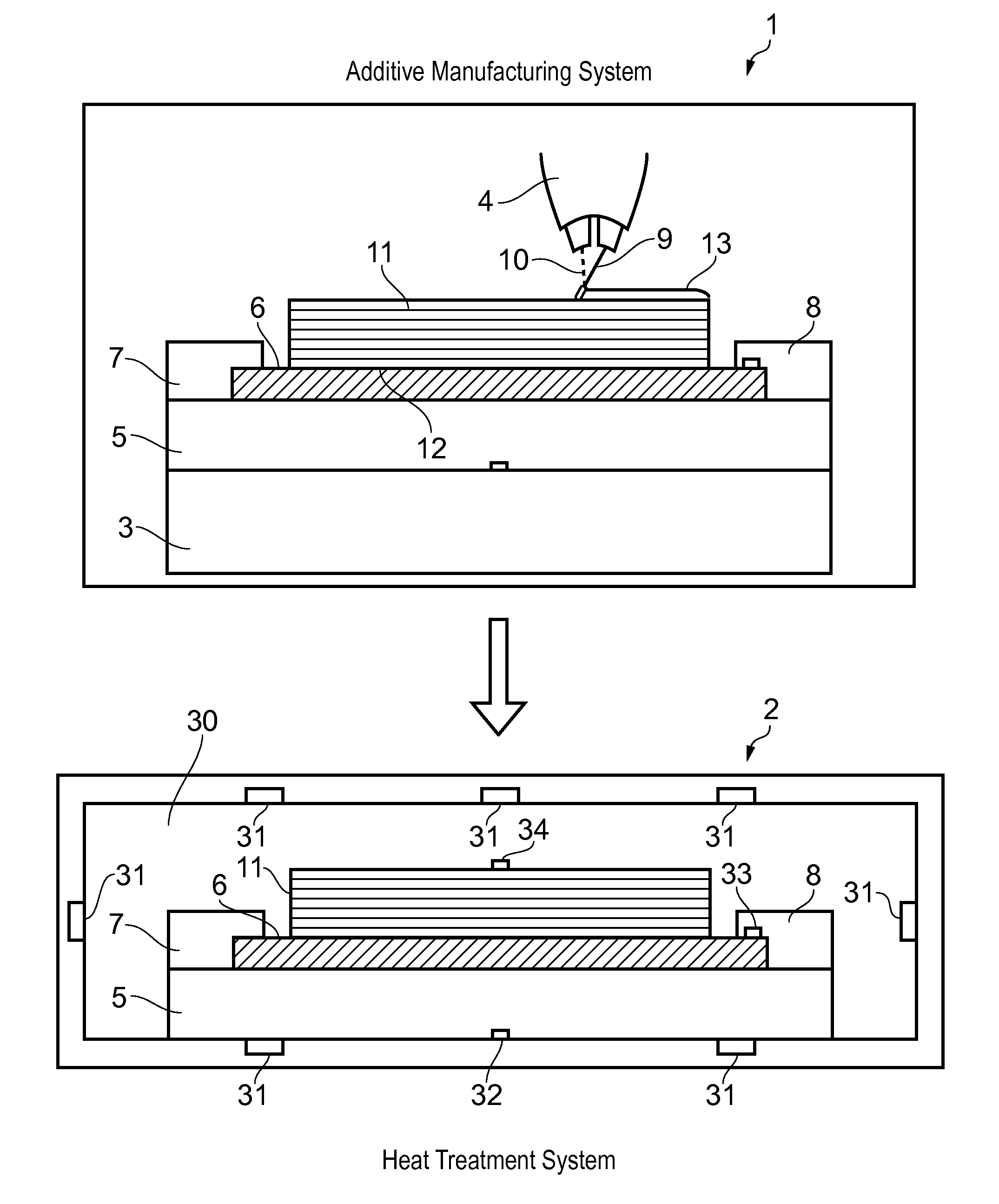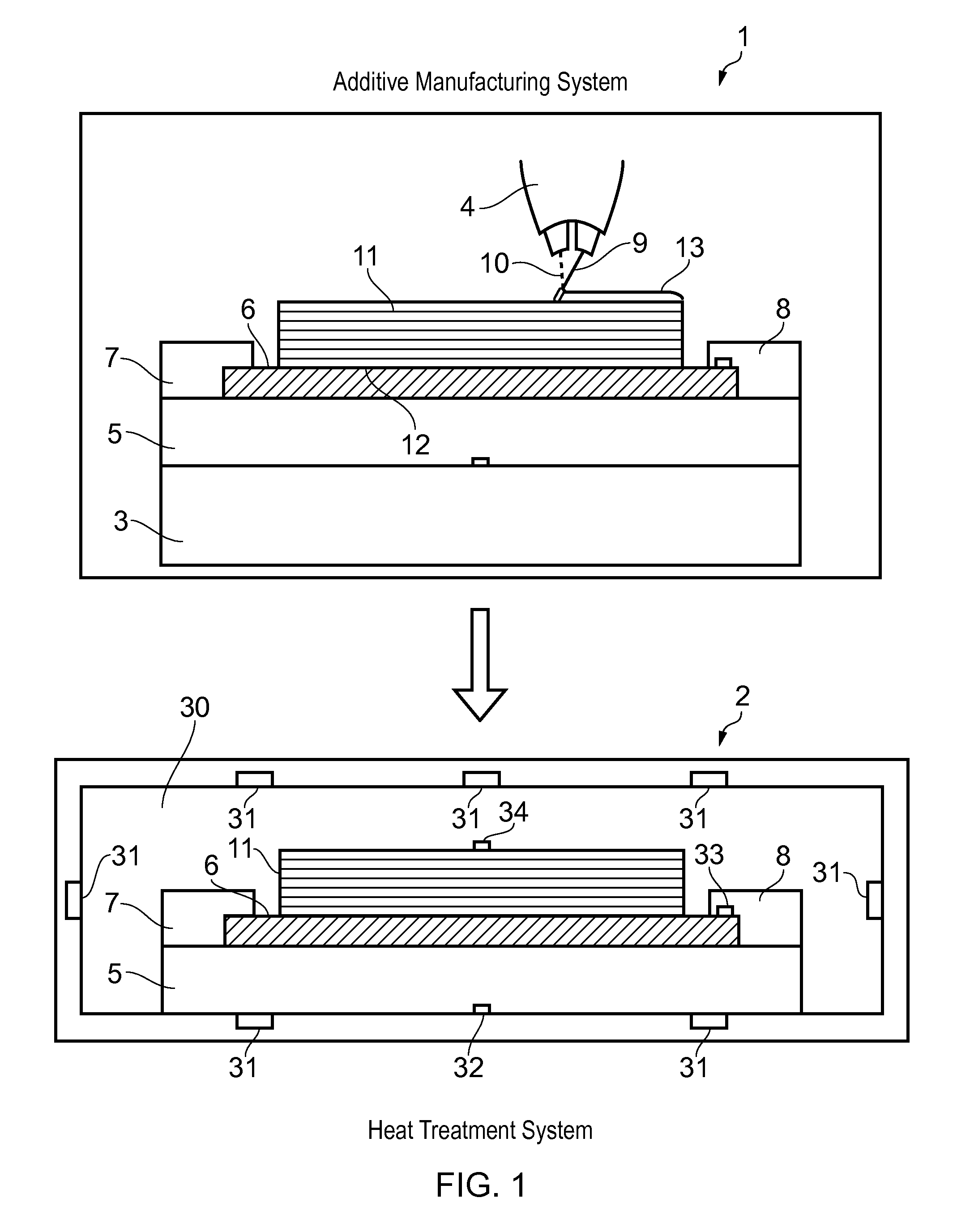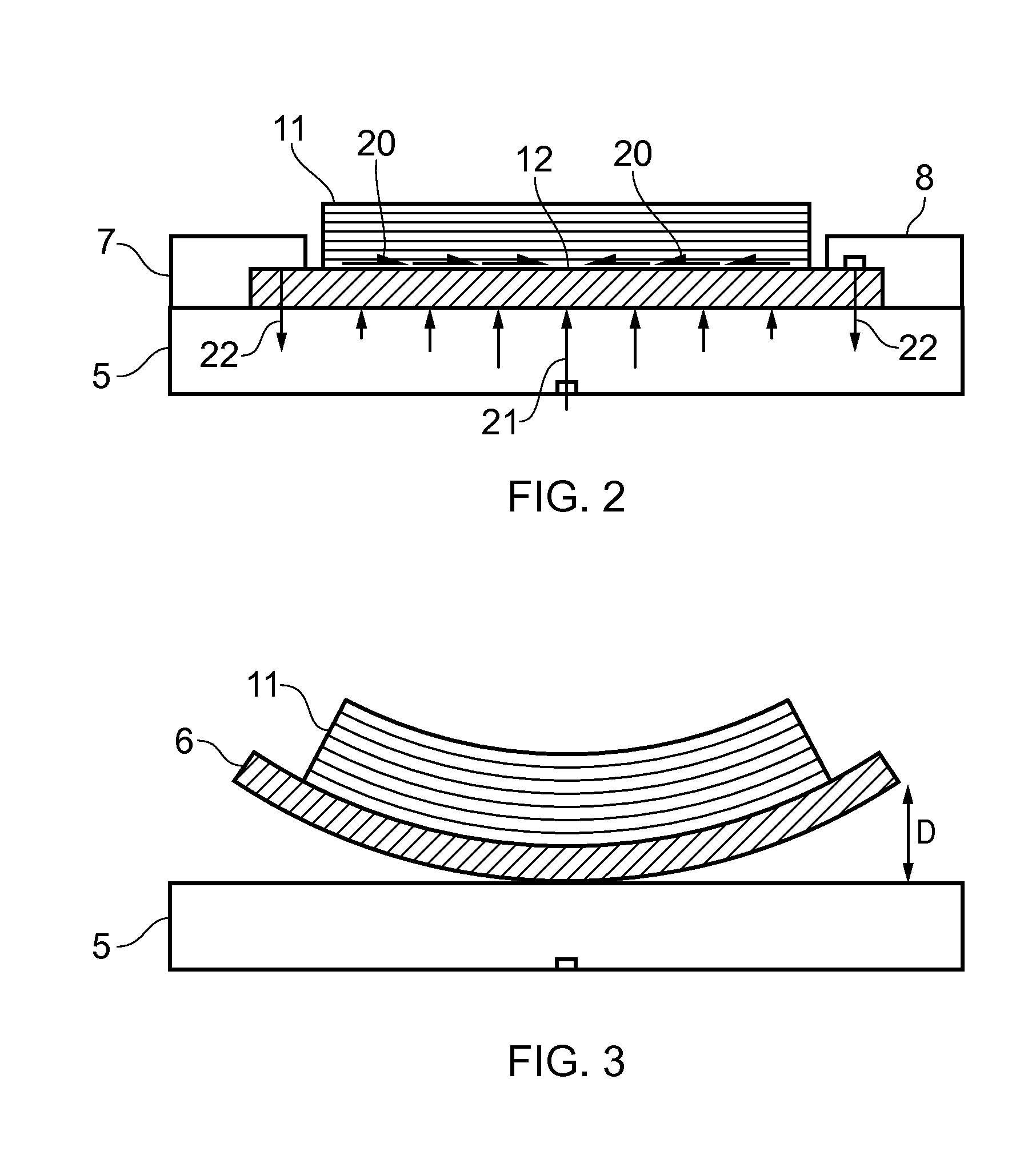Method of Additive Manufacturing and Heat Treatment
a technology of additive manufacturing and heat treatment, which is applied in the direction of welding/cutting auxillary devices, non-electric welding apparatuses, auxiliary welding devices, etc., can solve the problems of not being able to withstand the temperature of heat treatment furnaces and being likely to have a very high thermal mass
- Summary
- Abstract
- Description
- Claims
- Application Information
AI Technical Summary
Benefits of technology
Problems solved by technology
Method used
Image
Examples
Embodiment Construction
)
[0032]FIG. 1 shows an additive manufacturing system 1 and a heat treatment system 2. The additive manufacturing system 1 comprises a chamber containing a table 3 and a build head 4. A fixture 5 is shown in FIG. 1 on the table 3.
[0033]In a first step, a substrate 6 is placed on the fixture 5 and secured by clamps 7, 8. The substrate is pre-formed, in other words it is not formed by additive manufacturing on the fixture 5. Typically the substrate 6 is secured to the fixture 5 outside the chamber of the additive manufacturing system 1, and then the fixture 5 carrying the substrate 6 is introduced into the chamber and placed on the table 3.
[0034]In a second step, the build head 4 is operated to perform a build process by building a near net shape part 11 on the substrate 6 secured to the fixture 5. The build head 4 feeds metallic feedstock material 9 (such as titanium alloy or aluminium alloy) towards the substrate, and the material 9 is melted by a laser beam 10 as it is fed onto the ...
PUM
| Property | Measurement | Unit |
|---|---|---|
| temperatures | aaaaa | aaaaa |
| temperatures | aaaaa | aaaaa |
| temperature | aaaaa | aaaaa |
Abstract
Description
Claims
Application Information
 Login to View More
Login to View More - R&D
- Intellectual Property
- Life Sciences
- Materials
- Tech Scout
- Unparalleled Data Quality
- Higher Quality Content
- 60% Fewer Hallucinations
Browse by: Latest US Patents, China's latest patents, Technical Efficacy Thesaurus, Application Domain, Technology Topic, Popular Technical Reports.
© 2025 PatSnap. All rights reserved.Legal|Privacy policy|Modern Slavery Act Transparency Statement|Sitemap|About US| Contact US: help@patsnap.com



